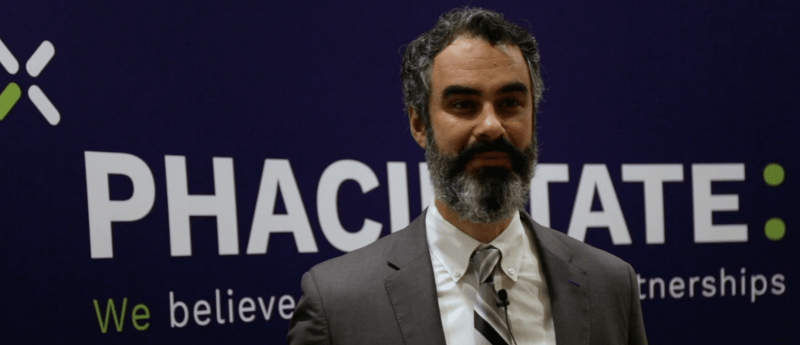Cenk Sumen (Thermo Fisher Scientific) on the ‘durability’ of cell & gene therapies

Cenk Sumen
Director of Business Development, Bioproduction Division, Thermo Fisher Scientific
Speaking at Phacilitate Automation Special Interest Group
May 30-31st 2018 – The Grove, London
Q1 – Why is the understanding of the durability of anti-cancer cell therapies so important right now and what impact does it have on pricing and reimbursement?
Ok that’s an excellent question I think it’s important for us to take a few minutes to address the impact of durability. This really is a key component of cellular therapies and the way we define durability is good to review, as they are a partial or complete response to treatment over the course of say, 6 months to several years. It really is a key component for these cellular therapies and it’s important to consider that the pricing and reimbursement allows for a one dose treatment. The manufacturing of these therapies is quite different than biologics and small molecules and it’s very complex logistic challenge, and the one-shot captures the effect of the cell therapy over a long time period.
Q2 – What can drug developers do to help manage the expectations of payers with regards to durability?
So in order to measure durability it’s important to use the right clinical biomarkers, so we can track the disease progression over the time period and for some patients this could take several years. The longest patient, I believe that been treated with Kymriah now has survived 6 years. So the reimbursement for durability has to involve a consideration of quality of life of the patient and symptom-free survival and I think with those considerations, the pricing reimbursement really seems to make sense.
Q3 – How is Thermo Fisher working to better inform the various stakeholders involved?
I think part of the answer here is really making sure we can educate the stakeholders that are involved, the patient’s, the clinicians, the hospitals and the payers. For example, I’m working with the American Society of Gene and Cellular Therapy on an education plans that are based on cell therapy disease-specific groups and working with patient advocacy groups to educate the stakeholders. The sponsors, the drug companies whom are making these therapies are also working with payers to make sure that there is clear understanding of the reimbursement and the impact of these therapies for the patient’s quality of life, as well.
Q4 – What are your thoughts on the long term commercial viability of Kymriah and Yescarta given their difference in durability?
Ok, it’s actually a great question and it’s important to consider that the two therapies are constructed somewhat differently, even though they have the same antigen specificity: Kymriah has a 4-1BB co-stimulatory domain and the chimeric antigen receptor, the CAR; whereas Yescarta has CD28 co-stimulatory domain. There is some data to indicate that the 4-1BB domain may allow greater durability for these therapies, but how it’s important to consider that a recent report from ICER has actually compared the two and finds them both to be equal in the value, the value for the money essentially, they did economic analysis of these two therapies. Now since Kymriah has been approved for large B-cell lymphoma which is the same approval for Yescarta, we will be able to see a head-to-head comparison and Kymriah has indicated that they may be matching the price for Yescarta – so the same pricing, same disease, same patient population. It is difficult for us to conclude what the relative values because we still don’t have data over thousands of patients, we really need to get data over, maybe have hundreds of patients. So you will be able to see the impact of their durability as we get the opportunity to track these patients in the same disease, with these two different treatments, over time a period of time.
Q5 – What is the definition of a ‘curative’ treatment and who’s responsible for defining this when it comes to pricing and reimbursement?
So the definition of cures, I’m going to go on a limb to attempt to answer this this, it’s a tricky one. But it might be important for us to consider all these leukemias, lymphomas and myelomas, is ‘liquid tumours’, it might be important for us to consider this as a chronic treatable disease, that the patient lives with over the whole lifetime, similar to HIV for example, but different infections – that are treated but not eliminated. So these may be considered that we can use ‘control’ rather then ‘cure’, a different C word. If we approach these therapies in this manner, I think we’ll see that the reimbursement really does make sense for these therapies, and the durability will push out that zone where we can actually provide quality of life to patients and allow them to have control over the cancer, over multiple years, with a one-dose treatment.